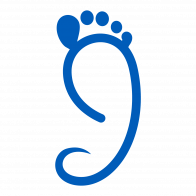The FAA isn’t your Enemy
This post may ruffle some feathers, but I feel it is true. The FAA has rules to follow and they follow them.
A world of rules
A CFI once told me, “Every one of those rules was written because someone died.” It’s a grim reminder of how far safety in aviation has come. Commercial flights have become the safest way to travel, but that wasn't always the case.
The FAA has been tasked with enforcing the rules of aviation. It is no simple task, but their responses to any given situation are largely predefined by the existing laws. Often, there is little room for interpretation.
Hands are Tied
There is one advantage to knowing the FAA will follow the rules: you KNOW they will follow the rules.
When Jessica took her Sport Pilot checkride, there was no precedent for what she did. However, the rules clearly stated that if she got the right signoffs, completed the training, and had a driver’s license, then she could take the checkride.
It does seem she was grilled in a longer Oral Exam than normal, but she still passed. (And a pilot who really knows their stuff is generally a safer pilot.) When it came to the flight portion, the examiner stated that “It doesn’t matter how you do it. If you can show me that you can fly an airplane with your nose, then you can fly an airplane. If you can show me that you can do it safely, then you can be a pilot.”
The examiner’s personal feelings on whether or not people without arms could be pilots made little difference. Jessica met the requirements and satisfied the expectations for the exam and became a pilot.
So Many Rules
There are a lot of rules to worry about as a pilot. The best paperweight in my office is an outdated FAR/AIM book! We have a responsibility to know the rules as they apply to us to the best of our ability. So keep reviewing your current copy of the FAR/AIM even after your checkride.
If you are an aspiring pilot with a disability, talk with as many people as you can who have the license you seek, the airplane you fly, and especially the pilots who took their checkride in the airplane you fly. For example, taking a checkride in an Ercoupe without rudder peddles limits you to aircraft with only two axis of control (which is basically only the Ercoupe). Most pilots have never heard of this rule but talk with Ercoupe pilots for a while and it will come up.
Good luck, and fly safe!
Disclaimer: we at Rightfooted Foundation are not lawyers and nothing herein should be considered legal advice. Also, these things change with time. Go speak with someone who knows all the details and is up to date before taking any action.

